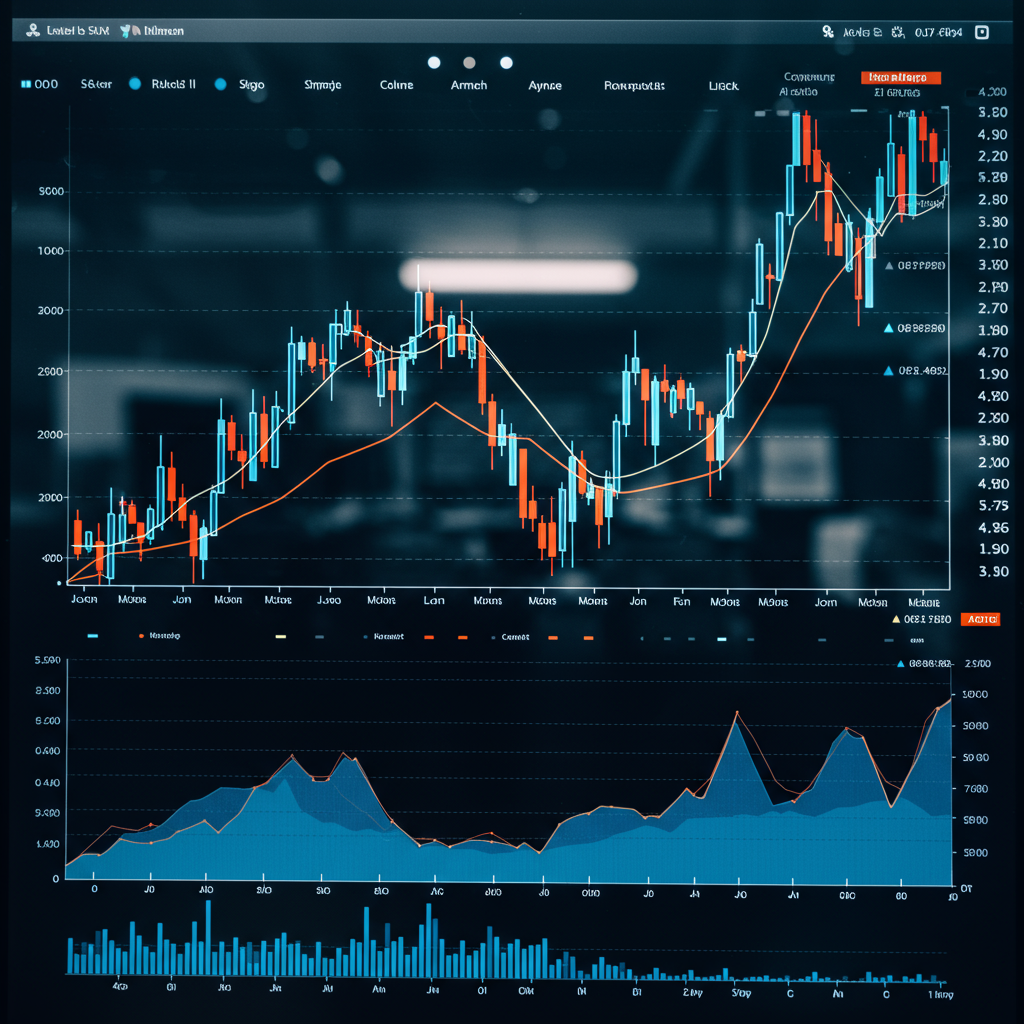Stock market Hits New Peaks Amid Mixed Global Signals
Stock markets closed last week on a remarkably positive note, with key indices reaching unprecedented levels. On Friday, the S&P 500 index surpassed its previous record, a milestone quickly followed by the Nasdaq Composite, which also charted a new all-time high. This surge was significantly propelled by major technology stocks, including Nvidia and Microsoft, both of which reached their own record valuations, creating substantial gains for stakeholders.
This market buoyancy wasn’t solely driven by tech giants. Investor sentiment received a lift from developments on the international trade front. However, the week also brought conflicting signals, highlighting the delicate balance influencing market direction. While positive trade news emerged, abrupt changes in diplomatic stances and incoming economic data added layers of complexity for investors navigating the current landscape. Understanding these diverse factors is essential for grasping the forces shaping market performance right now.
Market Rally Reaches New Heights
Friday saw the broad-based S&P 500 index climb significantly, ultimately closing at 6,173.07. This marked a notable increase of 0.52% for the day, comfortably exceeding its prior record high of 6,147.43. The tech-heavy Nasdaq Composite experienced similar upward momentum, confirming the strength of the current rally, particularly within the technology sector. Early Sunday evening in the United States, stock futures showed a slight uptick, suggesting potential continued positive sentiment as the new trading week began.
Beyond the U.S., European markets also showed strength. The Stoxx Europe 600 index recorded a 1.14% gain on Friday. This European advance was partly fueled by strong performances from major banks, with shares in both Barclays and Deutsche Bank reaching decade-high valuations, signaling renewed confidence in the financial sector across the Atlantic.
Key Index Performance Highlights
S&P 500: Closed at 6,173.07 (+0.52%), setting a new record.
Nasdaq Composite: Reached a new all-time high.
Notable Stock Drivers: Nvidia and Microsoft hit record share prices.
European Markets: Stoxx Europe 600 up 1.14%, with Barclays and Deutsche Bank reaching decade highs.
Positive Momentum: US-China Trade Deal Boosts Sentiment
Adding to the positive market mood was confirmation of progress on the United States-China trade deal. Beijing announced on Friday that details of the agreement had been finalized. According to the statement from China, the framework includes significant provisions such as regulating the export of rare earth metals from China and easing certain technology restrictions previously imposed by the U.S. These developments were generally seen as positive steps toward reducing trade friction between the two economic powerhouses, providing a boost to global market confidence.
Amidst these positive developments, U.S. President Donald Trump made comments regarding the possibility of extending the current pause on certain “reciprocal” tariffs set to resume a week later. He suggested his administration retained the flexibility to make decisions, stating they “can do whatever we want” concerning the 90-day tariff pause. The prospect of postponing the re-implementation of these tariffs further contributed to the optimistic atmosphere prevailing in markets at the end of the week.
Trade Tensions Flare: US-Canada Digital Tax Dispute
While the US-China trade news was positive, another trade front saw a sudden deterioration. On Friday, President Trump abruptly announced the termination of trade discussions with Canada. This decision stemmed from a dispute over Canada’s plan to implement a digital services tax targeting the revenues of large American technology firms.
The proposed Canadian tax is expected to impact major U.S. tech companies, including industry titans like Amazon, Google, and Meta. The unexpected breakdown in negotiations between the U.S. and its northern neighbor introduced a note of caution into the market. Despite the S&P 500 being up by as much as 0.76% earlier in Friday’s session, the news regarding the halted Canada talks led to a slight dip, trimming some of the day’s gains, though investors largely absorbed the information without a major sell-off.
This contrast in trade dynamics – progress with China versus a setback with Canada – underscored the unpredictable nature of international trade policy and its potential to influence market movements, even when indices are setting records.
Economic Watch: Inflation Trends Higher Than Expected
Beyond trade and corporate performance, new economic data also captured investor attention. A key release on Friday provided insights into U. inflation. The core personal consumption expenditures (PCE) price index, a closely watched measure of inflation that excludes volatile food and energy costs, showed an increase.
For the month, the core PCE index rose by a seasonally adjusted 0.2%. Looking at the annual figure, inflation stood at 2.7%. Importantly, both the monthly and annual inflation figures came in 10 basis points higher than economists had anticipated. This slightly stronger-than-expected inflation data adds another layer of consideration for investors and policymakers alike, as it could influence future monetary policy decisions and impact purchasing power. Higher inflation can sometimes weigh on market valuations, particularly for growth stocks.
Eyes on Future Data: The Critical Jobs Report
Looking ahead, markets are keenly anticipating further economic data releases. The most significant near-term event is the release of the June nonfarm payrolls report, scheduled for the upcoming Thursday. This monthly jobs report is a critical indicator of the health and momentum of the U.S. labor market. It provides insights into job creation, wage growth, and unemployment rates, factors that heavily influence economic forecasts and Federal Reserve policy expectations.
The data contained in the nonfarm payrolls report has the potential to significantly impact the trajectory of the current market rally. Strong job growth might reinforce confidence in the economy but could also fuel concerns about inflation and potential interest rate actions. Conversely, a weaker report could signal economic cooling. Investors will have a limited window to react to this crucial data point; U.S. markets are scheduled to close early on Thursday and will remain closed on Friday, creating a compressed trading period following the release.
Global Market Snapshot
While U.S. markets commanded much of the attention with their record-breaking run, other global indices also showed strength. As noted, the Stoxx Europe 600 enjoyed a solid gain, buoyed by positive earnings and economic signals within the Eurozone. The rally in major European banks underscored broader confidence returning to key sectors beyond technology. These global movements highlight the interconnectedness of financial markets and the influence of international news and economic trends.
Beyond Stocks: China’s Major AI Development
In a significant development outside the immediate focus on stock indices and trade, the global artificial intelligence (AI) race saw a major move. On Monday, Chinese technology giant Baidu announced plans to make its Ernie generative AI large language model open source. This decision is being viewed as one of the most significant moves by the Chinese tech sector in the competitive AI landscape since the emergence of models like DeepSeek.
Industry observers are reacting strongly to Baidu’s move. Alec Strasmore, founder of AI advisory Epic Loot, commented on the potential impact, stating, “Baidu just threw a Molotov into the AI world.” He added, comparing Baidu’s offering to a high-quality product released at a disruptive price point, “OpenAI, Anthropic, DeepSeek, all these guys who thought they were selling top-notch champagne are about to realize that Baidu will be giving away something just as powerful.” This development underscores the escalating global competition in AI development and the potential for open-source models to disrupt the market.
Analyzing the Conflicting Signals
The recent market activity reflects a complex interplay of factors. Record highs in major indices demonstrate underlying strength and bullish sentiment, particularly in the technology sector. Positive developments in the crucial U.S.-China trade relationship provided a clear tailwind. However, the abrupt end to U.S.-Canada talks injects uncertainty, highlighting that geopolitical risks remain pertinent market movers. Simultaneously, higher-than-expected inflation data reminds investors that economic stability is not guaranteed and could lead to shifts in monetary policy expectations.
The market’s resilience in the face of the Canada trade news suggests that, at least in the short term, investors may be prioritizing other factors, such as the overall economic outlook, corporate earnings potential (particularly in tech), and the positive movement on the China trade front. However, this mix of signals creates a landscape where volatility could increase, especially as new data points like the nonfarm payrolls report are released. Investors must remain vigilant, evaluating how these disparate pieces of information collectively influence the market’s direction.
What Investors Should Watch Next
As the week progresses, the primary focus for investors will undoubtedly be the June nonfarm payrolls report on Thursday. This data has the potential to confirm or challenge current economic assumptions and could be a significant catalyst for market movement. Additionally, any further commentary or action from the U.S. administration regarding the potential extension of tariffs due next week will be closely monitored. Developments in global trade disputes, including the situation with Canada and ongoing US-China relations, will continue to be relevant. Finally, investors should keep an eye on any further inflation data or commentary from Federal Reserve officials that could provide clues about the future path of interest rates. Staying informed on these key economic and political fronts is crucial for navigating the market in the coming days.
Frequently Asked Questions
What specific market indices hit record highs and what stocks drove it?
On Friday, both the S&P 500 and the Nasdaq Composite indices reached new all-time high closing levels. The S&P 500 closed at 6,173.07, surpassing its previous record. This market rally was significantly boosted by strong performance from major technology companies, notably Nvidia and Microsoft, which also hit their own record share prices.
How did President Trump’s trade actions impact the market rally last week?
President Trump’s actions had a mixed impact. Positive sentiment was buoyed by China’s confirmation of finalized details for a trade deal with the U.S., and his suggestion that his administration could postpone upcoming “reciprocal” tariffs. However, his abrupt announcement on Friday to terminate trade talks with Canada over a digital services tax led to a slight dip in the S&P 500 index, trimming some of the day’s gains, showing the market’s sensitivity to trade disputes.
What key economic data points are investors watching closely in the near term?
Investors are closely watching the latest inflation figures, such as the recent report showing the core personal consumption expenditures (PCE) price index rose 0.2% monthly and 2.7% annually, which was slightly higher than expected. The most anticipated data point this week is the June nonfarm payrolls report, due out on Thursday. This key labor market indicator is expected to provide insights that could influence market direction and expectations for future economic conditions and potential monetary policy moves.
Conclusion
The past week ended with significant market milestones, including record highs for the S&P 500 and Nasdaq, driven by strong tech performance and positive news surrounding the US-China trade deal. However, the market also faced headwinds from rising inflation and an unexpected breakdown in US-Canada trade talks. As investors look ahead, the upcoming nonfarm payrolls report stands out as a critical event that could shape sentiment and market trajectory. Navigating this environment requires careful consideration of conflicting economic signals and ongoing geopolitical developments that continue to influence global markets. Staying updated on these key factors will be paramount for making informed decisions in the days to come.


